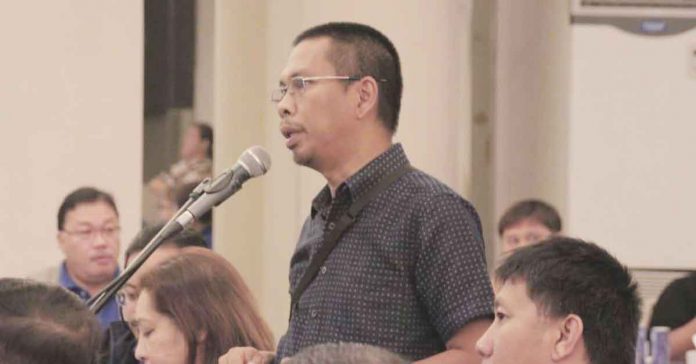
ILOILO City – Dengue hemorrhagic fever claimed two lives in this southern city in the first month of this year, alarming the City Health Office (CHO). No dengue-related deaths were recorded in the city last year.
The fatalities were a 15-year-old male from Project 1, Barangay Sooc, Arevalo district who died at the Iloilo Doctors’ Hospital on Jan. 19 and a 28-year-old male from Barangay Calahunan, Mandurriao district who expired on Jan. 24 at the Western Visayas Medical Center.
Dr. Roland Jay Fortuna, CHO’s assistant health officer, emphasized the importance of seeking early consultation, citing how fast dengue claimed the life of the 28-year-old male.
After manifesting fever, paleness and weakness on Jan. 22, the victim had a medical checkup on Jan. 23. After experiencing seizure and bleeding, he was brought to the hospital on Jan. 24. He expired on that day due to cardiac arrythmia secondary to dengue shock syndrome.
“Sa mga adult, kon kis-a abi nila hilanat lang, ginadala-dala lang, wala plan magpa-checkup,” Fortuna said, adding that dengue symptoms should not be ignored.
The 15-year-old male, on the other hand, had fever on Jan. 13 and had his laboratory test such as NSI-AG and complete blood count on Jan. 16 and Jan. 18. He died on Jan. 19.
“It is really important to seek early consultation so that early man ma-rehydrate kag early mahatagan bulong, so mas madasig maka-recover,” Fortuna said.
INCREASING DENGEU CASES
Meanwhile, Dr. June Frances Umani, CHO point person for emerging/re-emerging disease control program, reported that from Jan. 1 to 31, the city had 38 dengue cases (including the two deaths).
Twent-seven already recovered as of this writing.
Compared to the 45 cases recorded last January 2022, the January 2023 cases were lower. However, Fortuna noted that the number of cases this year is increasing every morbidity week unlike last year. Although they had recorded 35 cases in the first week of January 2022, the cases slowed down in the succeeding weeks.
“This January 2023, kita naton ang trend, amat-amat saka ang cases,” Fortuna said.
Dengue is a mosquito-borne viral infection causing a severe flu-like illness that could be fatal if not managed well. Its carriers are day-biting mosquitoes (Aedes albopictus and Aedes aegypti) that breed in clear, stagnant water.
The Department of Health said the peak in dengue cases has been observed every three to four years. The Philippines had a spike in dengue cases in 2016 and in 2019.
“Ang gina-worry lang namon kay this will be the fourth year prior to the last nga nag-outbreak ang dengue which was 2019. Ang ginabasehan naton amo ang ginatawag nga alert threshold based on the cases in the past three years. So kon ang basehan ang mga cases naton in the last three years, medyo nubo. That is why ang alert threshold sa subong nga tuig nubo man,” Fortuna explained.
He noted that the period they are seeing to be the most critical for this year is late March and beginning of April wherein the alert threshold is eight cases and the epidemic threshold is 11 cases.
“By the end of March or April (2023) kon makita naton nubu-nubo ang alert threshold kag aton epidemic threshold. Nga kon magdamo lang ang cases naton…nga for one week nga mag-more than eight cases ka, ma-reach na ang alert status kag mag-more than 11 (cases) during this time, pwede na maka-declare outbreak kay na-reach na ang epidemic threshold,” Fortuna said.
The district of Lapuz has the most number of dengue cases this year with 15 followed by Arevalo (seven), Jaro and Mandurriao (five each), Molo (three), City Proper (two), and La Paz (one).
CHO PREPARATIONS
The CHO, as part of its usual intervention, has already started executing measures to combat the increasing dengue cases.
Fortuna said they have teams that already started conducting vector surveillance in barangays wherein mosquitoes are tested to check if they are carriers of dengue.
The CHO also conducts misting to kill mosquitoes. However, Fortuna said the challenge is it will not be effective when washed away by the rain. The same thing when larvicide is used on stagnant water and the water overflows.
Fortuna said all district health centers are implementing this measure.
Moreover, the city is preparing hydration units for manageable dengue cases by converting the modular hospital and previously-used quarantine facilities. Each district health center has each own hydration unit, too.
“Just like sang 2019 pag outbreak, gin-utilize naton ang La Paz Maternity Clinic as hydration unit para ma-lessen pagpa-hospital sang mga patients. Kon pwede man lang ma-manage sa district health center nga level,” Fortuna explained.
They also opened the dengue fast lanes in each health center.
“Tanan nga mga pumoluyo nga magpakonsulta sa health center nga once may mga signs of dengue gina-prioritize naton sa fast lane. We also do the dengue testing sa aton mga health centers,” he noted.
The assistant city health officer again emphasized to the public the importance of practicing the 4S strategy to prevent the spread of dengue: search and destroy mosquito-breeding sites; self-protection measures like wearing trousers and long-sleeved shirts and daily use of mosquito repellent; seek early treatment; and support fogging/spraying only in hotspot areas where increase in cases is registered for two consecutive weeks to prevent an impending outbreak./PN



